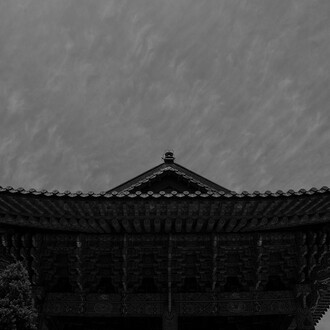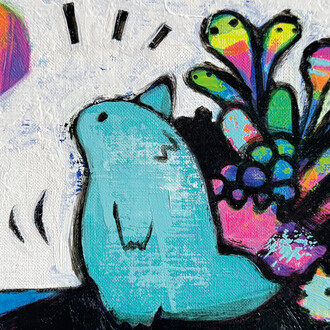The bright red is festive yet not obstructive; a yellow is like a harvest that brims with autumn wind, filled to the outer edges of the canvas; the black is reticent, reserved as if taken out of a letter full of history, speaking of dreams and insouciant depth. These are the fitting descriptions of the colors found in Insoo Chun's lacquer paintings. In fact, to the trained eye, the colors are all like dreams which have both occurred a long time ago and are yet to come; they speak with gentle whisper and without fanfare. Yet, in all the abstract depth of the turbid canvases, these colors tell a story of unusual provenance.
Insoo Chun has been working with lacquer for years, but more precisely, she uses a very particular type of lacquer, namely, a kind of natural lacquer called Ott in Korean. This type of lacquer has a rich history, and in Korea, many objects are traditionally produced with this type of material – anything from chopsticks to beds to household furniture. Hence, while the paintings appear abstract, they deal with a concrete material which is unique and not seen outside of Korea.
This history gives intellectual anchor to the compositions and the techniques with which Insoo Chun avails herself. In her paintings, which exhibit the mature techniques of Western abstraction, the materiality of the paint itself is the cultural signpost which cannot be reduced to anything Western. Hence, in the postcolonial sense, her work re-appropriates the cultural heritage of her native country from the philosophical and cultural spheres of the colonizing civilization.
It should be noted that painting with lacquer is a very difficult skill to acquire. Due to the unusual physical properties, this requires skill and patience, for the medium’s sensitivity to temperature and humidity creates a time-consuming and labor-intensive process, resulting in a time frame of a month or longer for the completion of a single painting. In addition, the physicality of the material behaves unlike any other paint commonly used in Western painting, as it oozes and flows with great viscosity. The time it takes to dry makes it even more challenging, but, in the hands of the learned artist, is transformed at once into an aesthetic tool to rebel against the dominant traditions of Western painting.
The fluidity of lacquer is inherent in the ambient aesthetics of Insoo Chun's lacquer compositions, which gently and incipiently create an atmosphere of dusky consciousness, where things slip in and out of being like dreams. This is evident in the remarkable “Flow” series, in which every piece brims with abstract organic forms that dance and swirl, without ever losing their coherence.
The artist has said this of her dream-like searching: “Lines diverge or converge. Two-dimensional shapes are made, and the flow of lines and faces creates a subtle harmony. Accumulating layers over thousands of years, each line eloquently speaks of the history of nature. The dark night sky is embroidered with countless stars. Roughly or delicately depicted air and wind, the energy from the sky and the earth, the water flow, and the convergence by time are embodied in the movement of several masses.”
With every challenging dream, the depth of our being is exposed, and reality is transformed. Afterward, the dreamer does not so much awake from the old dream but wakes into a new reality. Insoo Chun's paintings provide us with a window into this transformation by gently reminding us of the depth of the viewer's own personal histories, like intimate letters with deep import.
(Text by B. Alexander, PhD)
















